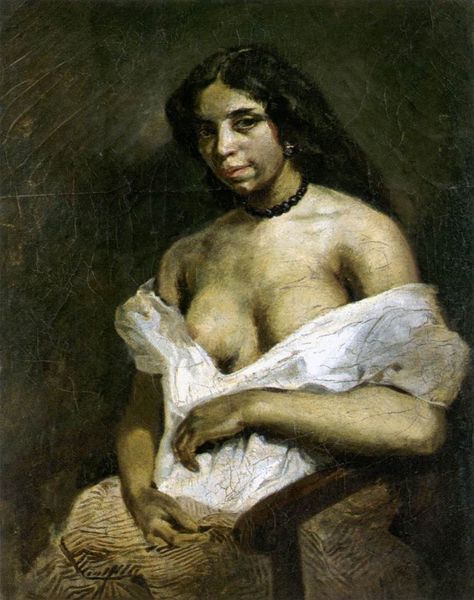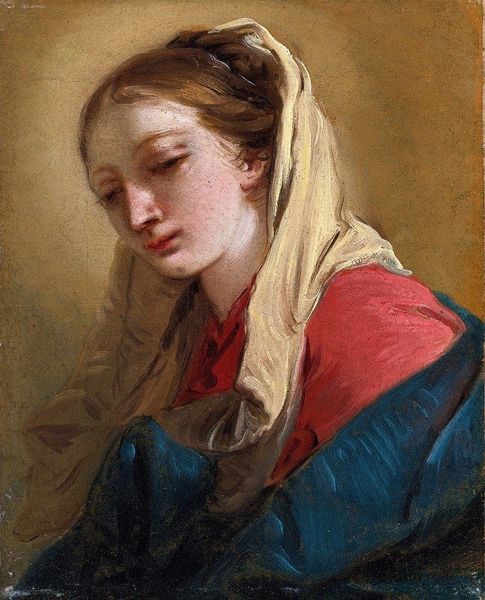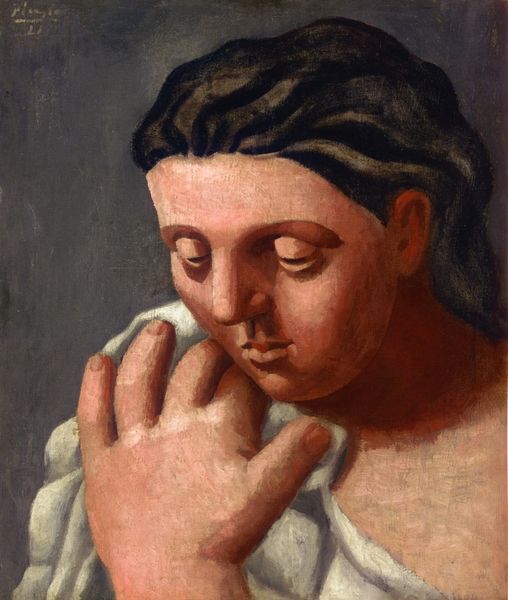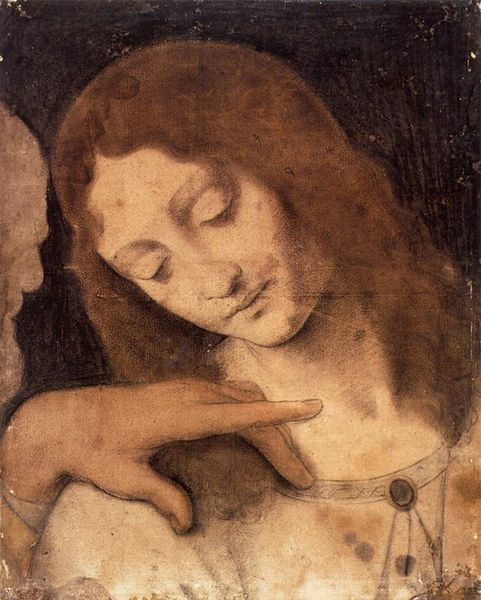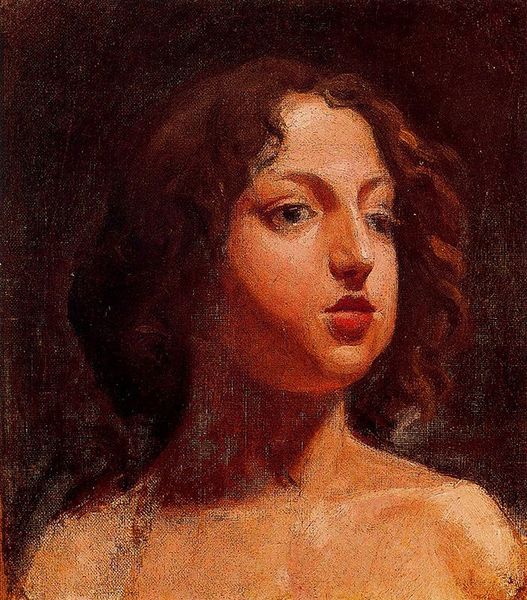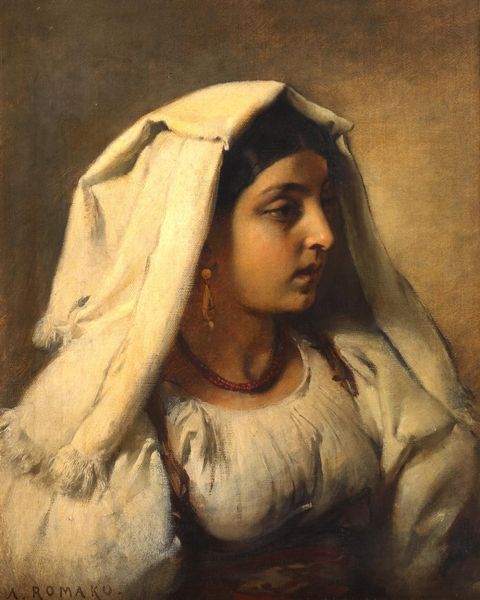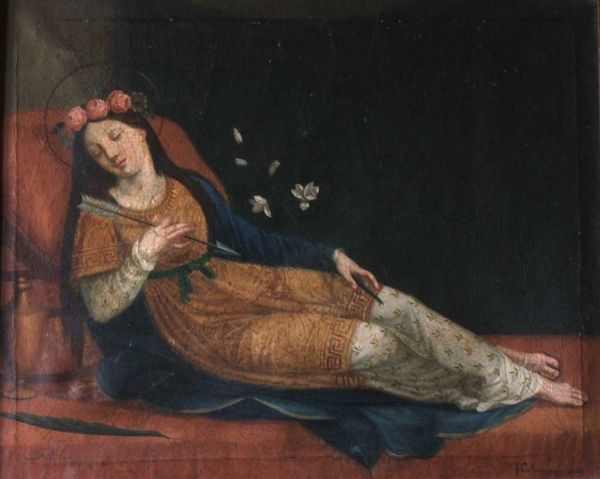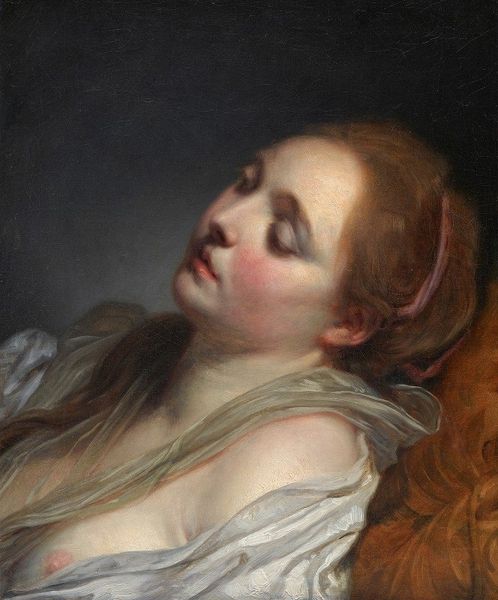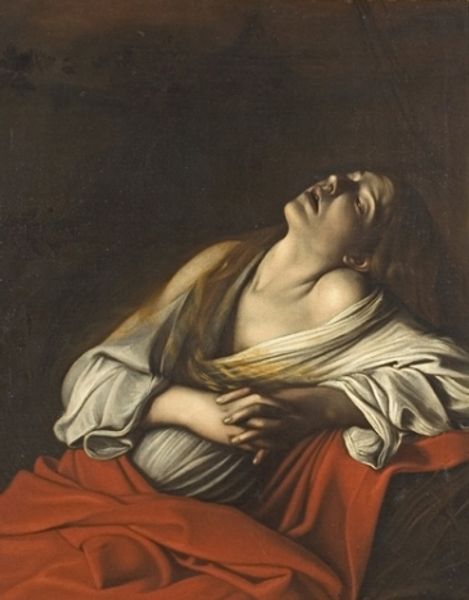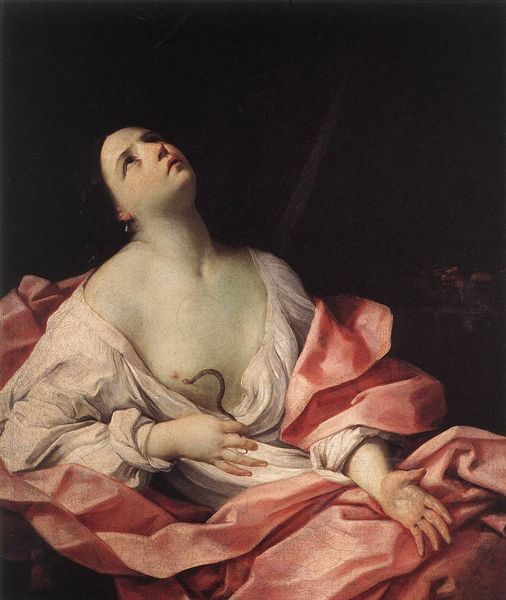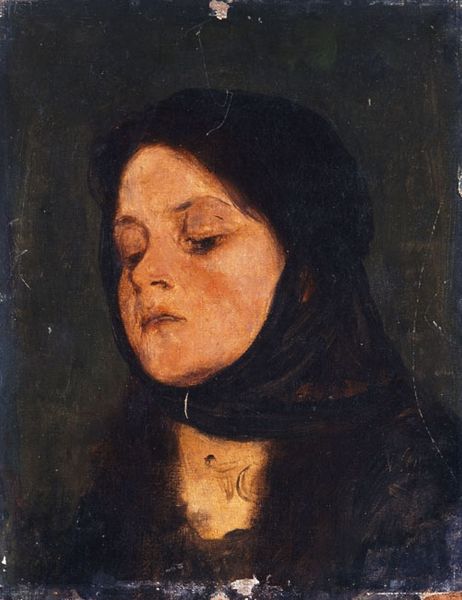
Copyright: Public Domain: Artvee
Editor: Here we have Jan Matejko's oil painting, "Portrait study of a woman," from 1881. She appears so tranquil, almost lost in thought. What do you see in this piece? Curator: This image deeply resonates with the visual language of Romanticism. The closed eyes… that's not merely sleep. It symbolizes inner vision, a connection to deeper emotional or spiritual realms, consistent with the period's exploration of individual feeling and the sublime. The hands clasped to the breast are incredibly potent: a symbol of devotion, perhaps, or deep introspection. Does this speak to a collective memory? Editor: Collective memory? How so? Curator: This pose echoes depictions of saints and grieving figures across centuries. Consider the "Mater Dolorosa," or depictions of Psyche, both recurring subjects in art. These visual echoes build layers of meaning. Is she in prayer? Reflecting? Grieving? This ambiguity pulls us into a symbolic space. What emotions are conjured for you? Editor: Definitely contemplation… maybe even a hint of sorrow, but also acceptance. The softness of the brushstrokes adds to the sense of quiet reflection. Curator: Exactly! That technique furthers the sense of intimate spirituality. Romanticism embraced such introspection. The past speaks to us through these repeated images, yes? Editor: Yes, it gives me a new perspective on how art can carry symbolic weight across generations. Curator: Indeed! The power of these visual cues… fascinating, isn’t it?
Comments
No comments
Be the first to comment and join the conversation on the ultimate creative platform.
